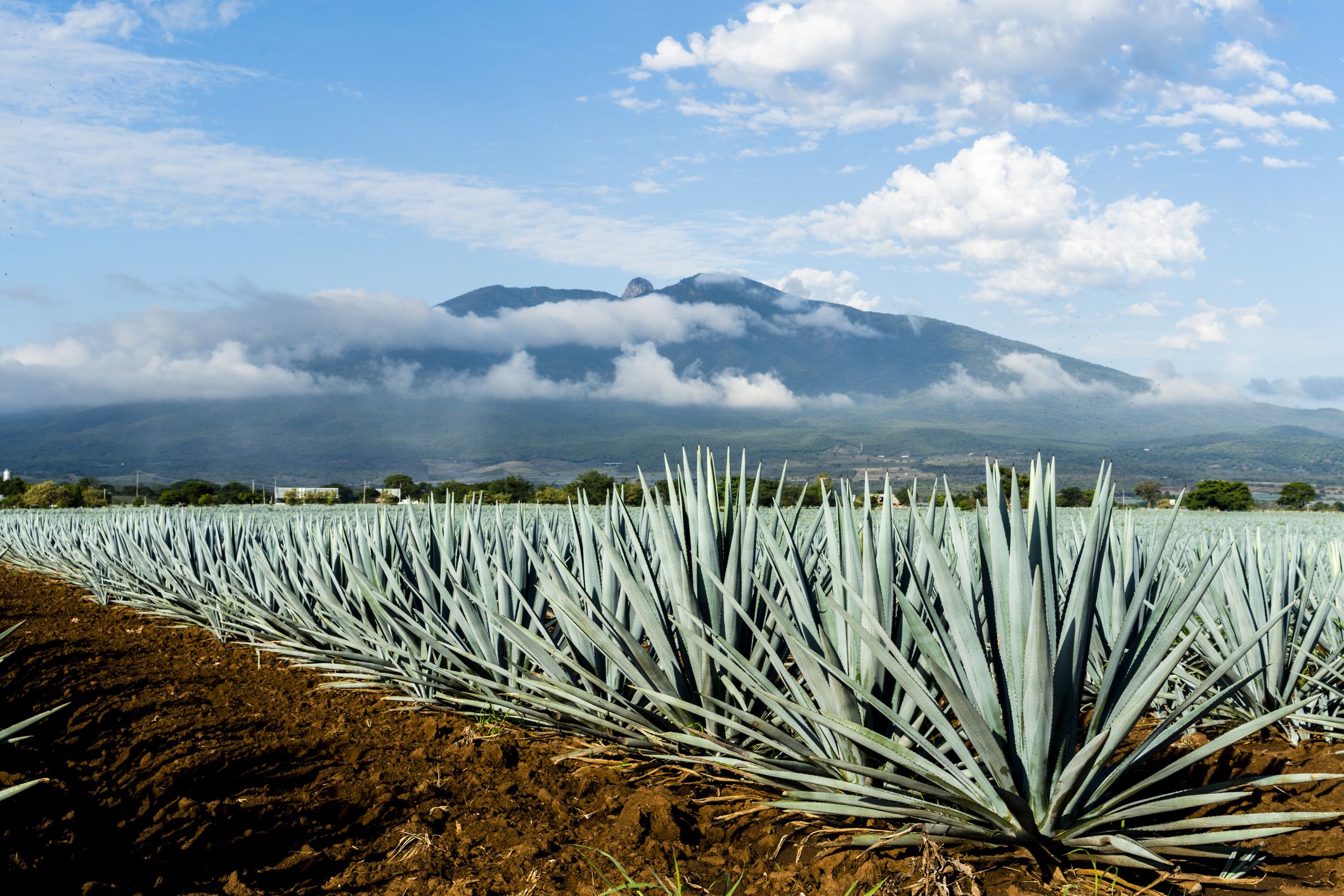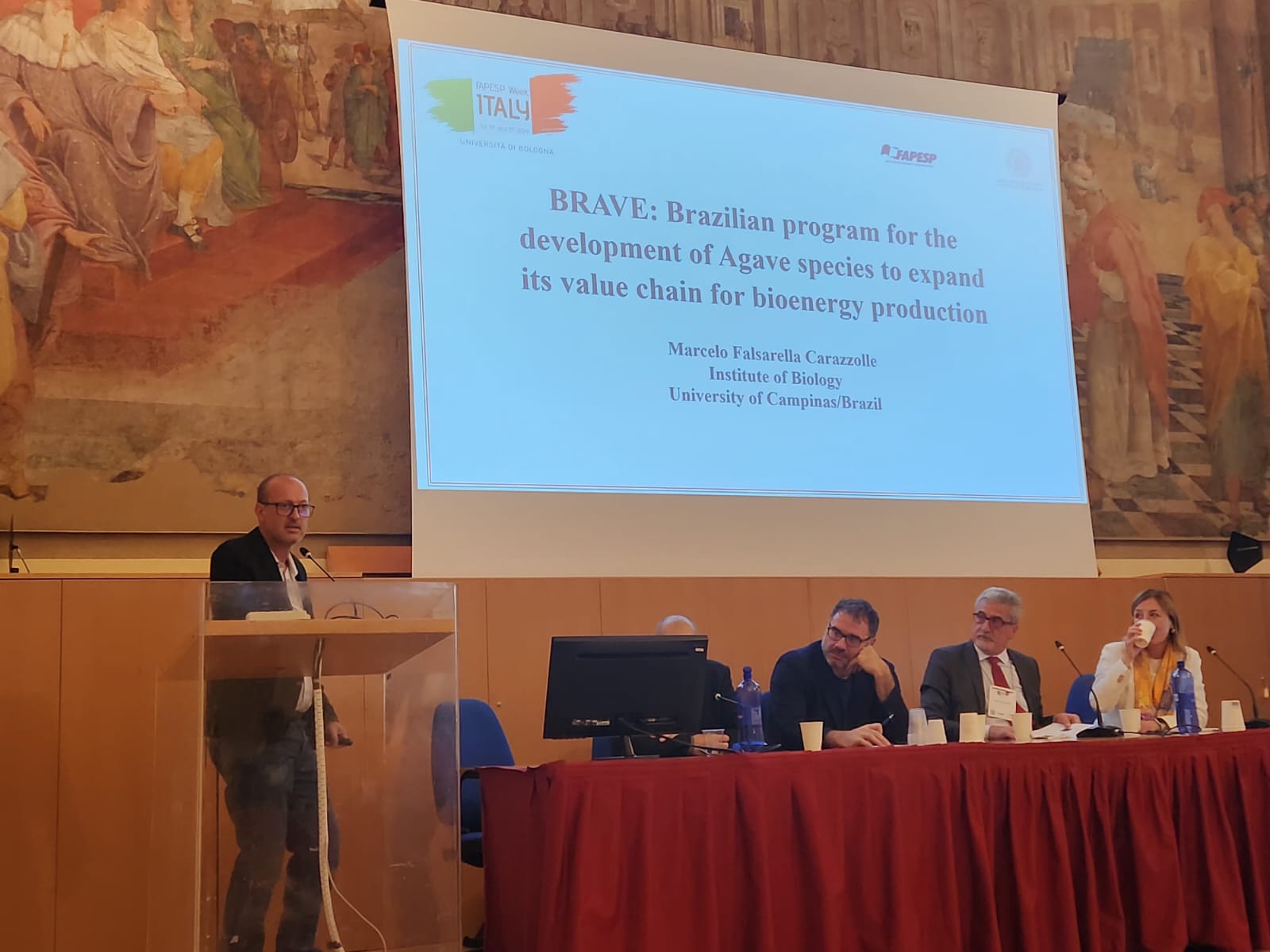
Climate change has caused an increase in the semi-arid climate region in Brazil. Data from the National Center for Monitoring and Warning of Natural Disasters (CEMADEN) and the National Institute of Space Research (INPE) in the South American country indicate an expansion of 7,500 square kilometers per year since 1990, which is equivalent to five times the area of the city of São Paulo. A similar phenomenon has been observed in some regions of Europe and North Africa.
With this in mind, and with the desire to find solutions to mitigate climate change, a group of Brazilian researchers began searching for plants with the potential to be used to generate bioenergy and that could be grown where the climate is not favorable for sugarcane. They decided to study Agave, a genus of succulent plants that includes more than 200 species and is widely used in Mexico to make tequila.
The work is being carried out with the support of FAPESP within the Brazilian Agave Development (BRAVE) project, a partnership involving the State University of Campinas (UNICAMP), the company Shell and other teaching and research institutions such as Senai CIMATEC (the Integrated Manufacturing and Technology Campus of the National Industry Service, the non-profit initiative of the CNI, the National Confederation of Industry), the Federal University of Recôncavo da Bahia (UFRB), the University of São Paulo (USP), and São Paulo State University (UNESP). The latest results were presented on October 14th during FAPESP Week Italy by Marcelo Falsarella Carazzolle, professor at the UNICAMP’s Institute of Biology (IB) who coordinates the initiative alongside Gonçalo Pereira, also from IB-UNICAMP. The event, which ended on October 15th, was held in partnership with the Alma Mater Studiorum – Università di Bologna (UNIBO).
“In Brazil, the main species grown is Agave sisalana, whose leaves are used to make sisal fiber. However, this process makes use of only 4% of the plant, generating a large amount of waste that’s now put in the field to be degraded,” said the researcher. “However, it’s possible to generate bioenergy from both the juice extracted from the leaves, which is rich in inulin, a type of sugar, and from the bagasse, which is rich in cellulose. In addition to the leaves, agave pine cones also accumulate a lot of inulin that can be used. The plants require less water and fertilizer [compared to sugarcane], grow in five years, and generate 800 tons of biomass per hectare.”
The group has collected different species of agave throughout Brazil and in countries such as Mexico and Australia to create a germplasm bank. And it’s investigating the phenotype of the plants, evaluating its sugar composition, photosynthesic and growth rates, how much it needs irrigation, and its relationship with the soil, among other factors. Based on this information, it’s developing strategies to help overcome the challenges involved in transforming agave into the “sugarcane of the sertão” – the sertão is the drought-ridden hinterland of Brazil’s Northeast region.


One of the main difficulties is that the yeast normally used in ethanol production, Saccharomyces cerevisiae, is unable to metabolize inulin, which is a fructose polymer and must be hydrolyzed to release fermentable sugars. The group has developed a genetically modified strain for this purpose and a patent for the process was filed with the National Institute of Industrial Property (INPI). Modified yeasts have also been developed and patented to metabolize xylose, one of the sugars present in bagasse (read more at: agencia.fapesp.br/52896).
Another challenge has been the search for biostimulants and fertilizers capable of accelerating the agave’s growth rate, which is considered slow. “We’re patenting a compound that doubles [the growth rate], and we’ve identified four others that have shown promise, evaluating the molecular bases and their mechanisms of action,” he said.
Another breakthrough was the development of a plant genetically modified to become tolerant to glyphosate, one of the most widely used herbicides in the world. “We patented the protocol for the genetic transformation of agave because even in the semi-arid region there’s a lot of competition with weeds.”
The ultimate goal of the project is to make it possible to produce not only ethanol from agave but also biomethane, biohydrogen and biochar.
Precision agriculture
Carazzolle’s presentation was part of a panel discussion on the agri-food system and sustainable development. Other participants were Lucas Rios do Amaral, from the Faculty of Agricultural Engineering (FEAGRI) at UNICAMP, and Valda Rondelli and Matteo Vittuari, both from the Department of Agricultural and Food Sciences at UNIBO. The panel was coordinated by José Paulo Molin, professor at the Luiz de Queiroz College of Agriculture (ESALQ-USP).
“Agriculture has grown rapidly in Brazil. Production in the country began to increase around 1950-1960. The starting point of this process was the beginning of mechanization, which made it possible to cultivate large areas. And this is closely linked to the arrival of immigrants, mainly from Italy and Germany. And they’re still in the country today, in the form of large companies [producing agricultural machinery],” Molin said. “Now we’re taking the next step, which is automation. This involves, for example, artificial intelligence tools embedded in the machines,” said the ESALQ-USP professor, introducing the topic of Amaral’s presentation, which highlighted the results of a project funded by FAPESP.
“We need to increase food production because the population is growing. But we need to optimize the use of natural resources and make the process more sustainable. Fertilization is one of the most important resources for us because in Brazil we have poor soils. Inappropriate use of fertilizers increases production costs and has an impact on the environment. In this scenario, precision agriculture becomes an alternative,” Amaral explained.
There is great variability in soil quality in agricultural regions, and treating the entire area homogeneously is a waste of resources, the researcher added. To avoid this, farmers need to hire companies that assess this variability by manually collecting numerous samples, which are then analyzed in a laboratory. The results provide a “prescription map” that indicates where more or less of a given product needs to be applied.
The goal of Amaral’s project is to optimize sample collection using data obtained from remote sensing (satellites and drones) and proximal sensing (equipment on tractors, for example). “My focus is not on providing the map for the farmer, but on supporting the service providers who do this. Hundreds of companies collect samples to generate the map. I’m trying to make this process more efficient so that fewer samples need to be collected to generate an even more accurate map,” she explained to Agência FAPESP.
Valda Rondeli presented projects linked to the development of autonomous vehicles for agricultural use, including tractors. The idea is to use intelligent equipment to obtain data and develop systems that can support decision-making on farms. “We’re in the age of big data. We need to use artificial intelligence to handle the data and get the right information at the right time,” she said.
Matteo Vittuari spoke about how to stimulate public policies that promote the transformation of the food system and sustainable development. He also talked about how to engage citizens and institutions in this process and how to measure the impact of these strategies.

